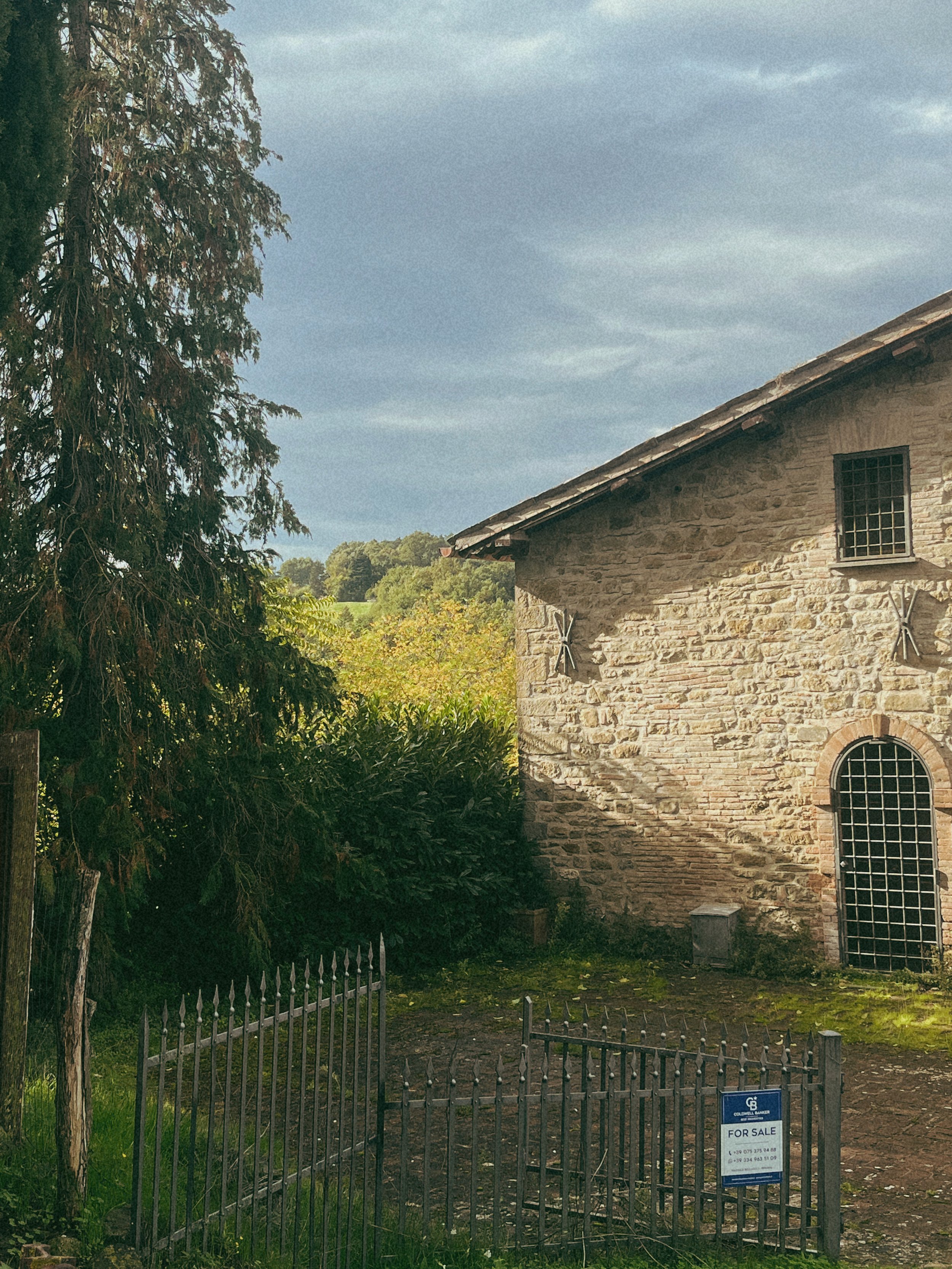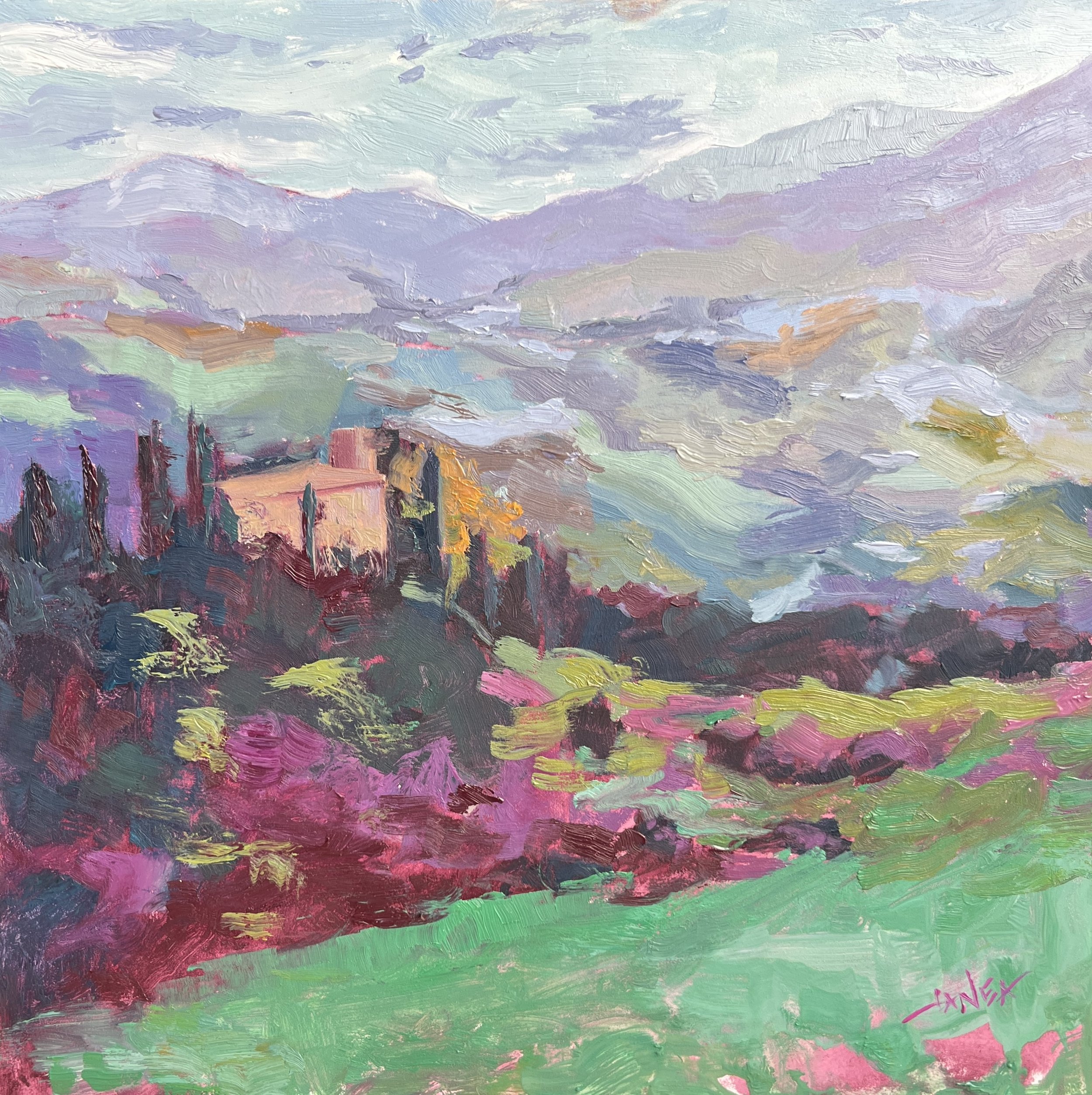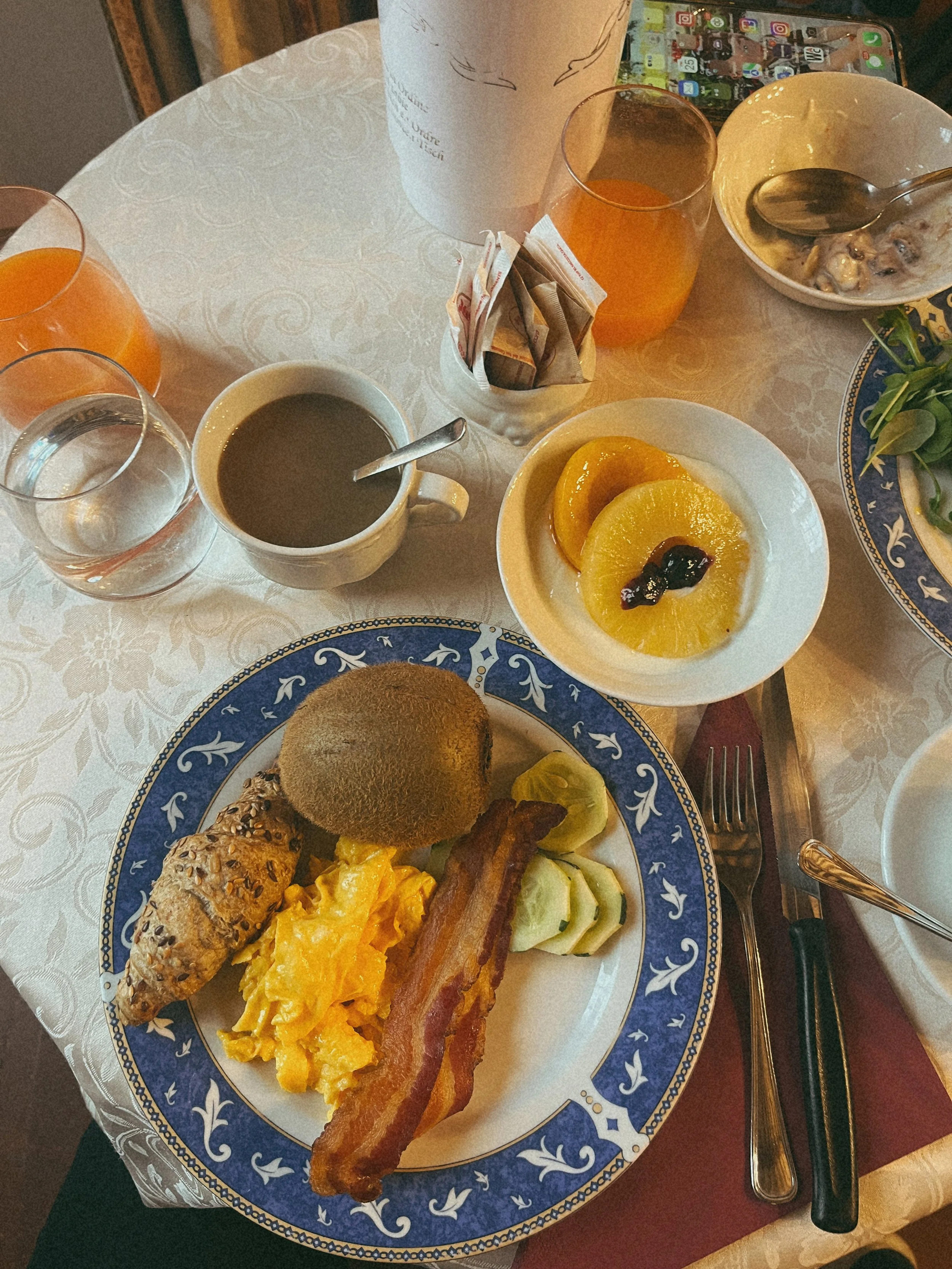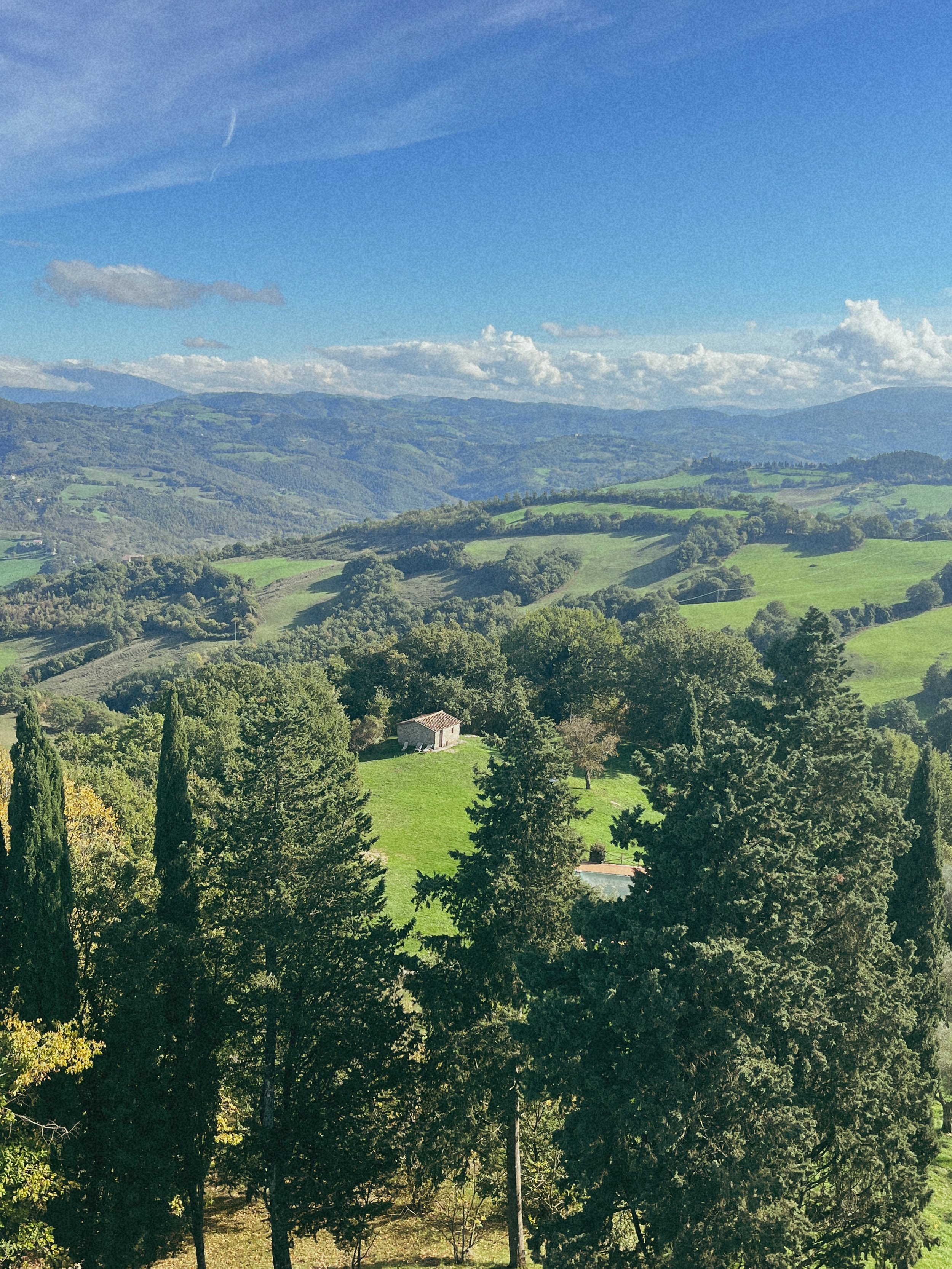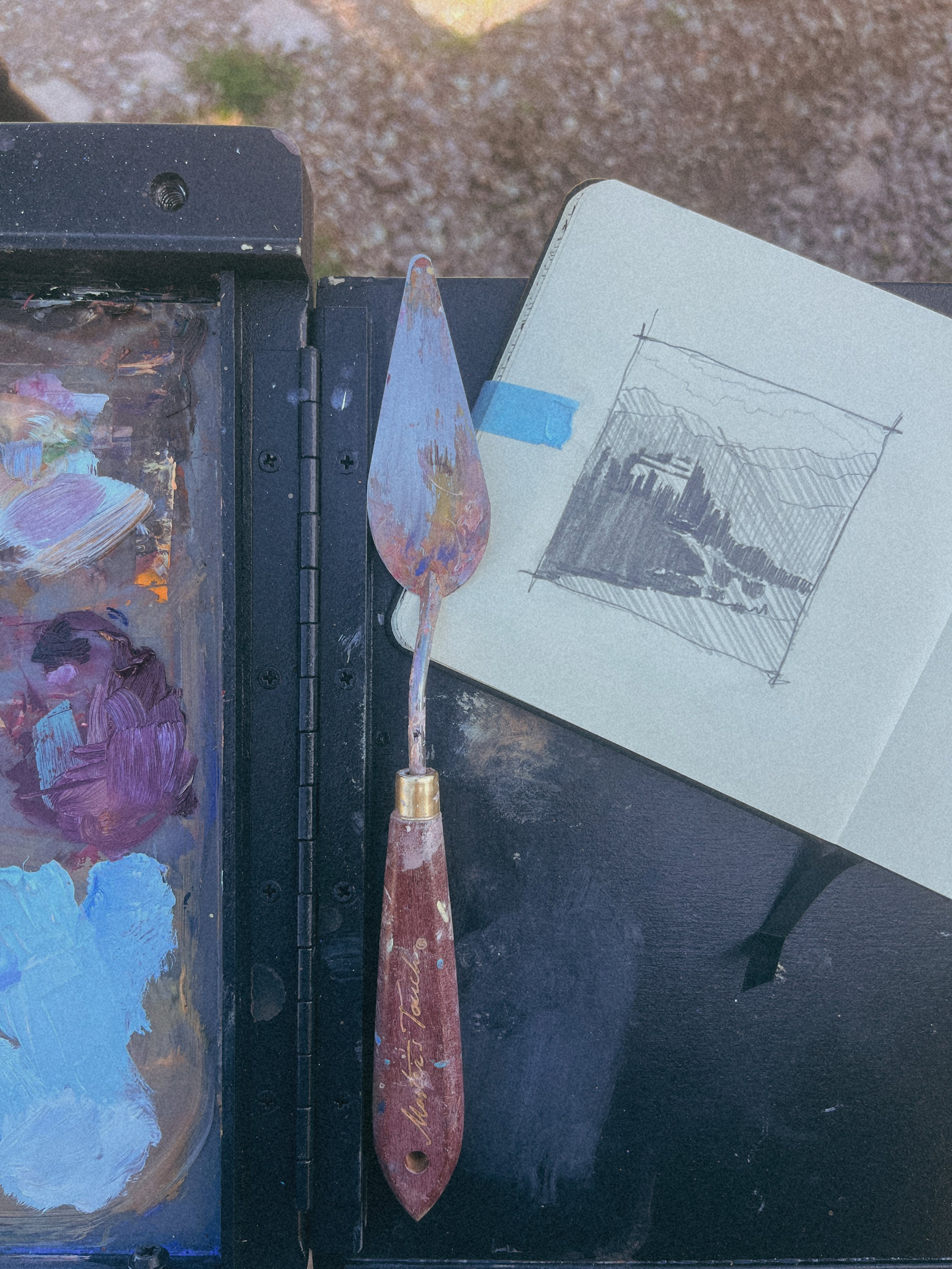Plein Air Painting in Umbria
Pigments of Umbria, 9x12 Oil on Paper, Sold.
Alright, I know—I’ve posted about Italy a lot on social media. I mean, there’s only so much I can share without feeling like I’m oversharing and you’re all silently rolling your eyes. But you, my lovely friends, have actually *chosen* to be here. So buckle up, because I’m finally sharing all the juicy details of my recent painting trip to Umbria, Italy, with Winslow Art Center.
Location
Now, even if you’re not an artist (or don’t consider yourself “artistic” in any way), you *still* need to add Umbria to your travel bucket list. Seriously. This region is beyond beautiful. The landscapes alone are worth the visit, with rolling hills, medieval towns, and groves stretching as far as the eye can see. But let’s talk about where we stayed first: Castello di Petroia.
This place was like stepping into a fairy tale. It had everything you could ever want in a rustic, dreamy Italian getaway: history, charm, incredible views, and (thankfully) modern comforts to keep you from feeling like you're stuck in medieval times. It’s only about a two-hour drive from Rome, which makes it the perfect base for a relaxed yet totally immersive experience.
A place is only as good as its people, and let me tell you, the folks at Castello di Petroia are absolutely one of a kind. The staff there aren’t just employees—they’re more like family, and you can feel it. It’s clear that they’re deeply connected to the owners, who actually live on the property, and that sense of belonging makes all the difference. Every single person had their role, and you could tell they took it to heart. Whether it was the chefs, the groundskeepers, or the folks running the front desk, everyone was genuinely passionate about what they did, and it felt personal. These people could just overhear a need and the next day it’d be met…the kind of people you hug and kiss as you leave. It’s that kind of warmth and care that makes you fall in love with a place even more.
View of the castle from the old watch tower.
Painting
Now, let’s talk about the painting. Every day was a new adventure in both art and nature. I’ve done plein air painting before, but something about the energy of Umbria pushed me to a whole new level. There’s something so uniquely serene about painting outdoors. You’re fully immersed in nature, surrounded by the sounds of roosters, goats, wind, and the distant hum of life. But there’s also that challenge of trying to capture what’s before you in real-time, with ever-changing light, shifting clouds, and those subtle shifts in color as the day moves on. It’s the ultimate exercise in focus, and you have to be quick to capture, or the moment slips away.
The real game-changer for me, though, was diving deeper into color theory. I’d been familiar with the basics, but this trip gave me the chance to really experiment and push myself. Our instructor, Scott Gellatly, really challenged us to see color—not just as a palette of pigments—but as a language. A language that could convey mood, depth, and light. I spent hours mixing and re-mixing paints, constantly asking myself how I could make the scene in front of me more vibrant, more *alive*. It was a humbling process, but I honestly feel like I turned a corner in my skill level. By the end of the week, I had a much deeper understanding of how to bring a painting to life—not just through brushwork, but through the emotional impact of color.
My Setup - Nitty Gritty Technical Bits
My daily plein air setup on the trip.
Very quickly - let’s talk plein air setup for any of you interested in the technical side or want to start plein air painting yourself!
The artist community has an infinite amount of opinions when it comes to the best setup, but in all honesty, it’s all about personal preference. I have a few different kits I like to use when painting outside depending on weather, how much time I have, how big I want to paint, how far I have to hike, etc. For this trip, I took my heftiest kit plus a travelling watercolor set for my sketchbook.
My preferences for all the basic elements of a plein air setup:
Strada Mark II Mast for my painting surface. It comes with an expandable mast that can hold paintings up to 30” which is extreme for plein air painting, BUT comes in handy in the studio when I need an extra easel. I didn’t bring the expander because I knew I wouldn’t be painting larger than 11x14.
Daytripper Palette for my mixing surface. I have abused the heck out of this thing and as you can tell, quite severely need to replace the mixing panel… it’s supposed to be gray. But it’s so easy to use, folds up very skinny, and has a huge amount of space to set my brushes, thumbnail sketch, and other tools.
OBO Carbon Fiber Tripod. Having a good tripod is a game changer because the wind can knock your setup over so easily if you don’t have a sturdy one. It’s about finding the right balance of durability, weight, and size. These can get big and heavy. This one is on the bulky side but still fits in the outside pocket of my pack.
Milwaukee Electrician Tool Backpack. Now this one could throw you for a loop but stick with me — electrical tools are VERY similar in size to brushes and other painting tools. It has the perfect amount of pockets and compartments for all my little extras I like to pack. PLUS it has a hard bottom so no matter where I’m painting, my bag won’t fall over. That’s huge when my hands are covered in paint and I need to grab something quick. It’s surprisingly perfect for painters. Again - on the heavy side but I apparently like to incorporate a leg workout when I go plein air painting.
When I’m all packed out - it is on the slightly heavier side, but I’m young and able so it works for now! And the benefits are totally worth it to me.
A lot of artists like pochade boxes, which are like art briefcases where one side serves as your easel and the other serves as your palette. These are great options and I have one as well, but I love how big the mixing space is on the daytripper and how it has “shelf space” already built in.
If you want to know even MORE I’m happy to share a list of my preferred supplies and tips on things to include in your pack. Shoot me an email and I’d be happy to talk further!
Overall, this trip was the perfect mix of inspiration, relaxation, and pure joy. Plein air painting always recharges me in a way nothing else does. There’s something about being in the moment, surrounded by nature, that re-energizes me—no matter how physically demanding it is. And that feeling of growth in my art, the quiet confidence of having learned something new, is just the icing on the cake.
I left feeling completely rejuvenated—not just as an artist, but as a person. So, yeah. There you have it. The nitty gritty. I’ll try to stop oversharing soon, but for now, I’m just soaking in all the memories and hoping I can recreate a little piece of Umbria in my next painting. If you’ve ever had the itch to paint or travel (or both!), put Umbria at the top of your list. Trust me, you won’t regret it.
Photo Gallery | Late October, 2024



